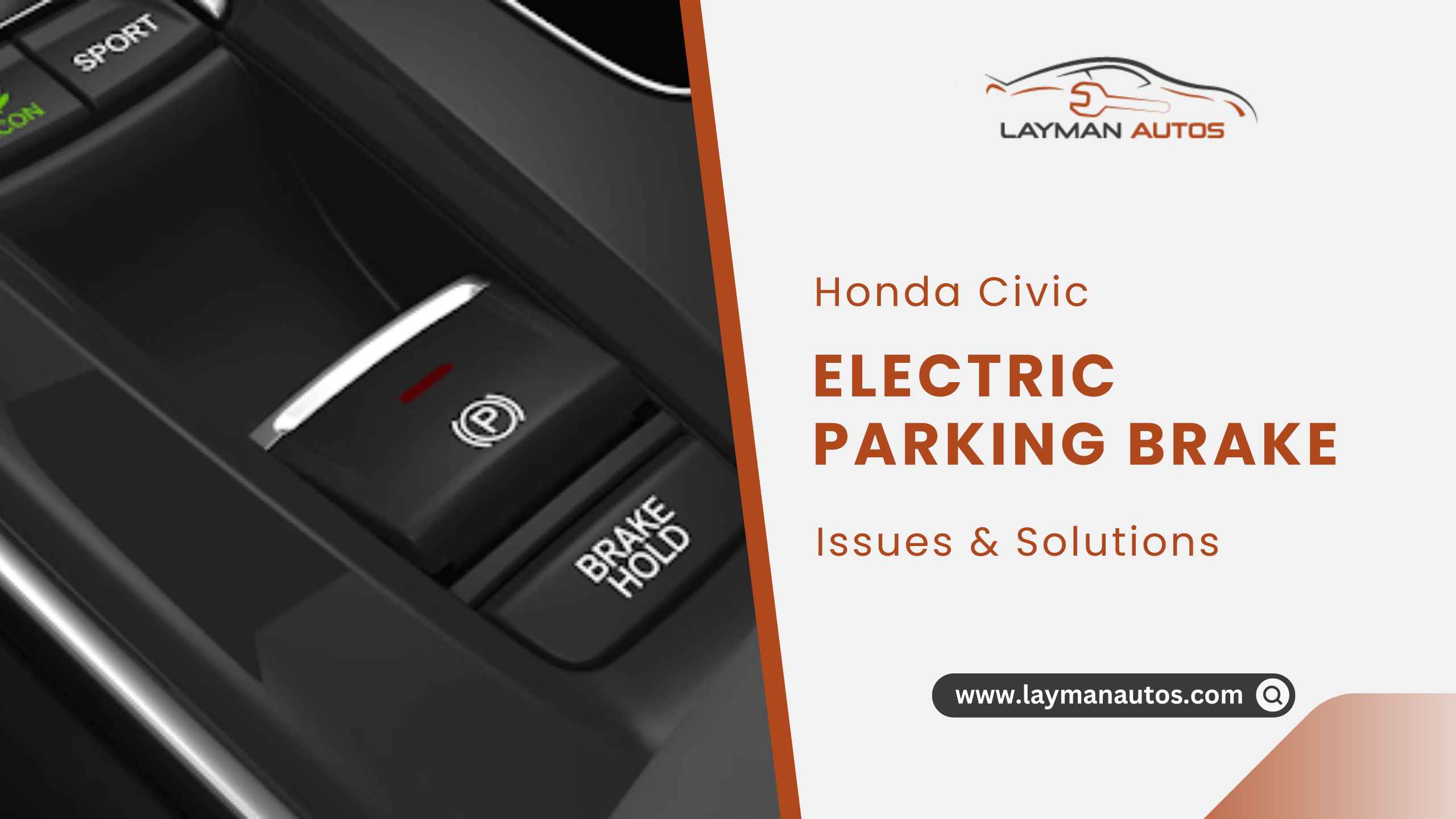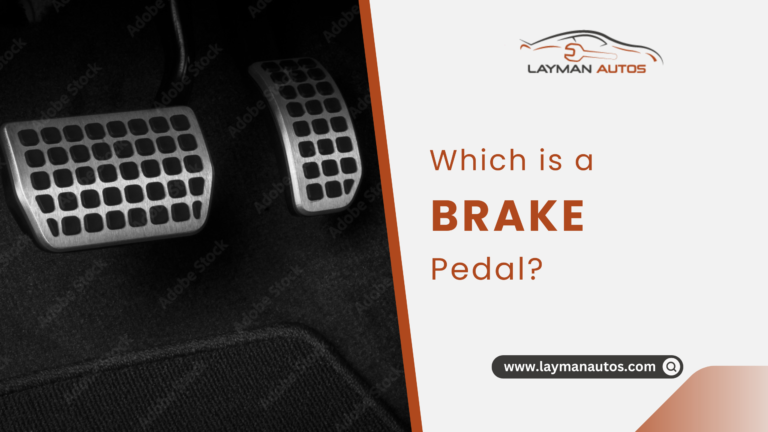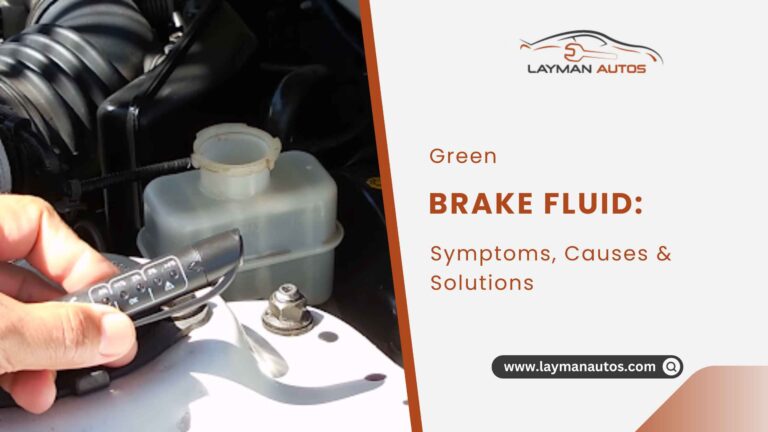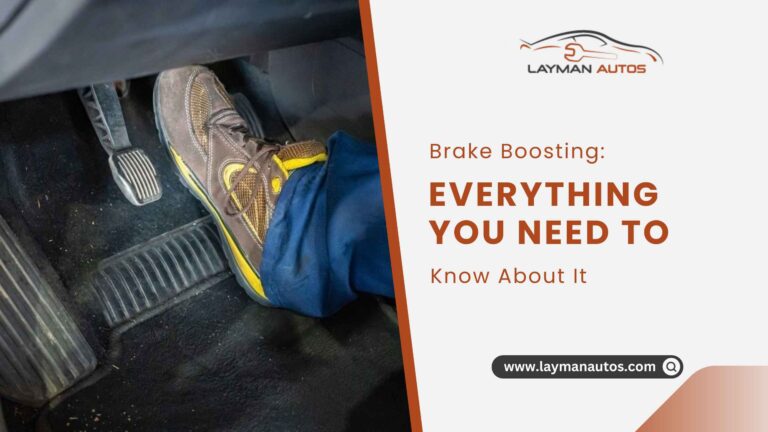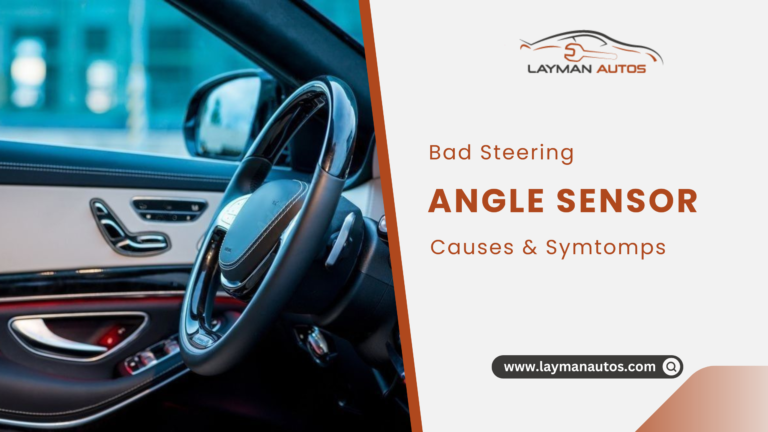Electric Parking Brake Problem with Honda Civic – Solved
An increasingly common addition to modern automobiles is the electric parking brake (also referred to as an “electronic parking brake”), which parking brake cable rust was first introduced in 2001. In many newer vehicles, EPB is standard. The Electronic Parking Brake (EPB) is an upgraded, safer, and better braking system.
Find out how you can fix the electric parking brake problem on the Honda Civic. There was a problem with the electronic brakes in the Honda Civic. In the 2016, 2017, 2018, 2019, 2020, 2021, and 2022 model years of the Honda Civic, the electronic parking brake problem error light can be triggered by a number of different problems, such as a dirty or faulty parking brake button, faulty wiring, or a malfunctioning parking brake servo motor.
It was also revealed that the 2016 model year Honda Civic had an issue with the electronic parking brake, which prompted a recall. Some 2016 Honda Civic vehicles had electronic parking brakes that failed, allowing the cars to roll away from their owners when they were parked.
In this piece, we’ll go over everything you need to know about electronic parking brakes, including how they work, what benefits you can expect to reap from having one installed on your baby ride, and the most typical issues you could encounter. Relax and take pleasure in the reading.
What is an Electric Parking Brake?
Most contemporary vehicles include an emergency braking system known as the electronic parking brake (EPB). If your vehicle is equipped with an electronic parking brake (EPB), activation is accomplished by depressing the brake pedal and then raising the EPB switch.
The EPB collaborates with the vehicle’s electronic control unit (ECU) and actuator system. The EPB’s principal function is to keep your car from moving around when it’s parked.
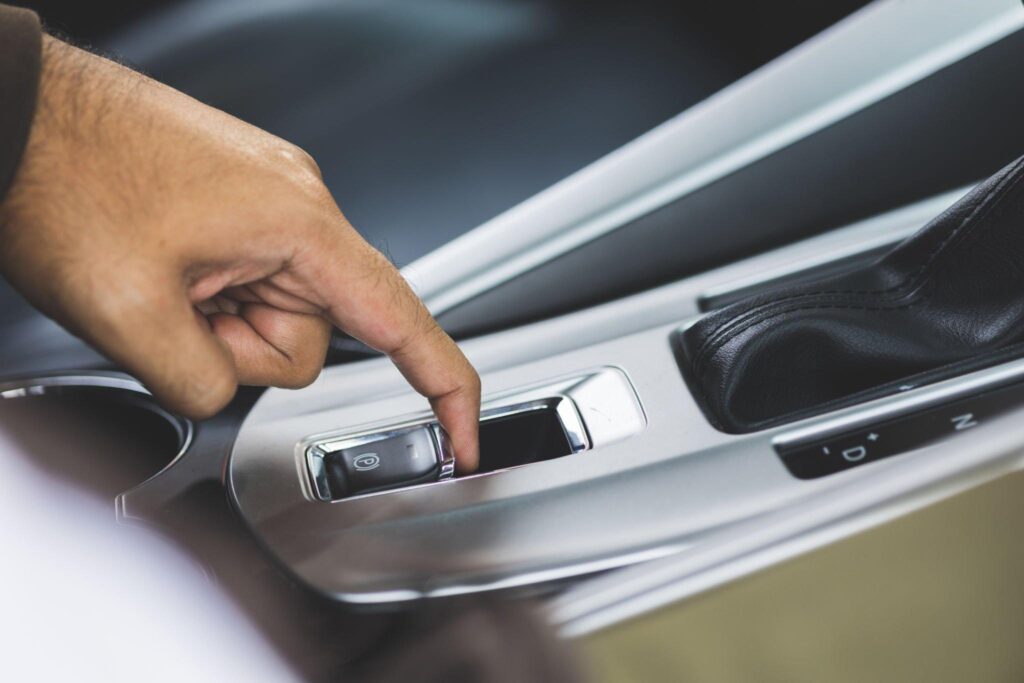
Pulling on the conventional handbrake lever causes cable tension. The brake pads on your automobile are securely gripping the brake discs thanks to the cable. The handbrake on certain vehicles is operated by a separate disc and pads located on the back axle.
No of the specifics of the system, locking the back wheels prevents the vehicle from moving while the emergency brake is engaged. Similar to conventional handbrakes, instead of using mechanical levers to lock, electronic handbrakes (also known as electronic parking brakes) employ electric motors.
Application of an Electric Parking Brake
A better and more easy way to apply the emergency brake in a variety of scenarios is with an electronic parking brake system, as was just discussed.
- Find the EPB button and lift it while pressing the brake pedal to activate the electronic parking brake. The ‘P’ button is often found near the gear stick.
- There is a mechanical click that can be heard when it is pulled up, indicating that it is now operational. Indicators will light up with the emergency brake light once the EPB is engaged.
- The electric parking brake may be disengaged by first depressing the EPB button, followed by stepping on the brake pedal. When the EPB is disabled, the emergency light in the instrument cluster will go off.
- The electric parking brake can be released in addition to pressing the EPB button. It has been tested in a variety of Honda models and should work in most other cars as well, but I can’t guarantee it.
Just put on your seatbelt and hit the brakes to get started. Simply letting off the brake pedal and depressing the throttle will release the parking brake. This short guide will teach you all you need to know about EPBs and parking brakes.
What is the Electric Parking Brake Problem Honda Civic?
The term “electronic parking brake malfunction” will appear on the screen of any Honda Civics that are experiencing technical difficulties. The brake/brake system warning light will illuminate in conjunction with this message.
The warning may be removed by following the procedure I detailed above. When you turn on the car’s ignition, the Electronic Parking Brake error notice should go away.
What Does an Electric Parking Brake Problem Mean on My Honda Civic?
If the malfunction indicator on your Honda Civic’s instrument cluster illuminates, it might be due to the three issues mentioned below.
While software issues in the vehicle’s assist control unit were suspected in 2016, other possible explanations include:
- Bad or dirty brake console parking switch.
- Defective wiring.
- Bad parking brake servo motor.
Bad Brake Switch
The most common cause of Honda’s electronic parking brake failing to engage is a faulty or filthy parking brake switch or button in the console. The button is located in the center console, the conventional location of the handbrake.
Inconveniently, there tends to be a lot of dust and filth there. A spilled drink, some bits of food, or any other foreign object might cause it to malfunction.
You may take apart the control panel and clean the electronic parking brake button if it stops working. The old switch must be removed and a new one installed. You may get a new button online or at the dealership, whichever is more convenient for you.
Defective Wiring
Possible causes of electronic parking brake issues include faulty or weak connections in the system’s wiring.
It’s important to remember that faulty central wiring or clips connecting to other components, such as the servo motor, might also lead to this problem. You should call an electrician to have a look at the notice if you think it may be caused by bad wiring.
Bad Servo Motor
For your Honda Civic, servo motors power the electronic parking brake. When you press the brake pedal, the servo motor is responsible for locking the wheels. Parking brakes on newer Honda Civics are operated by a servo motor instead of wires like in prior models. The electronic parking brake issue may be caused by a faulty or broken servo motor.
When the servo motor breaks, it must be replaced. Substituting new motors is a simple process. To save money, some Honda drivers choose to perform the maintenance themselves. However, if you are unsure about the process, it is recommended that you consult a skilled technician or take your Honda to a Honda repair shop.
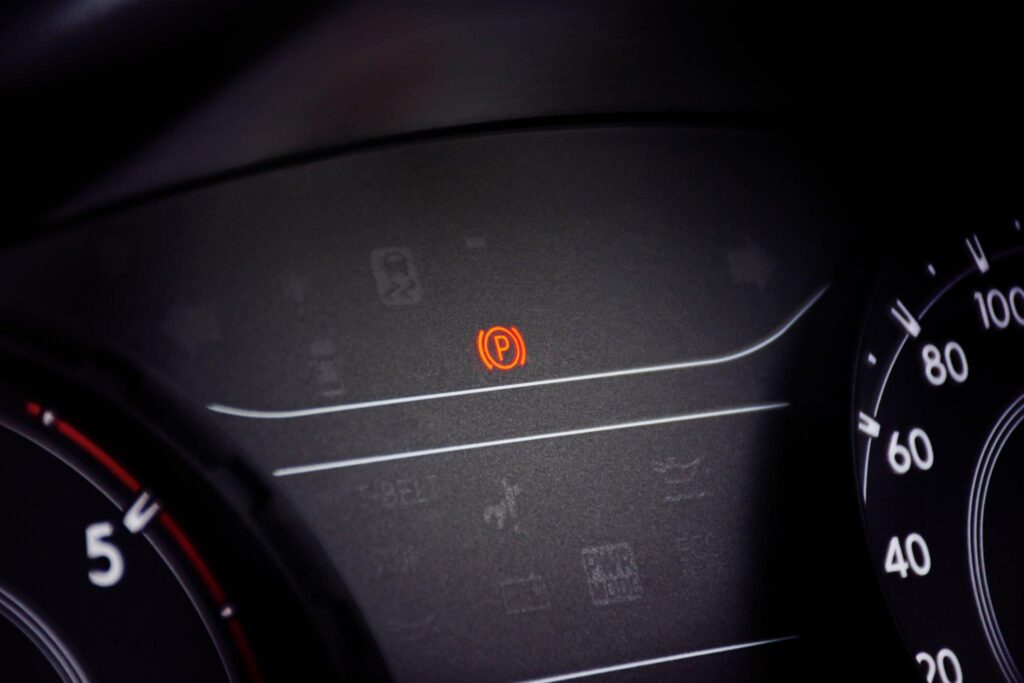
The Honda Civic electronic parking brake warning light might also be on for a variety of other, less frequent reasons.
Additional causes of electronic parking brake failure include:
- The switches and the EPB module failed to properly communicate with one another.
- An EPB module electrical malfunction.
- Jammed EPB motor.
- Parking brake cable rust (common EPB issue with Honda Civic).
How to Diagnose a Fault with an Electric Parking Brake
Following these procedures can help you diagnose and fix an issue with your electronic parking brake:
1. Stop the Car
You should get your car parked in a secure spot on flat ground before you begin troubleshooting. Check the back tires just to be safe.
2. Loosen the Affected Wheel’s Lug Nuts
In order to remove the damaged wheel, you will need to loosen the lug nuts with a tire wrench. The wrench needs to be turned in the anti-clockwise direction.
3. Remove the Wheel
The subsequent action is to remove the wheel from the side that has problems. But first, you’ll need to jack up your car. Then, you must ensure that a jack stands properly supports the jack.
4. Find the Electrical Connector to the Caliper
Now you need to find the caliper’s electrical plug. The next step is to remove it so that testing may continue. You may remove the connection by first pressing the locking tabs and then drawing it out of its socket.
5. Verify the Electric Actuator Motor’s Power Source
In order to ensure that the electric actuator motor is receiving the proper amount of power, you will need a multimeter tester. A direct current reading may be obtained by setting the multimeter appropriately (DC).
Choose the symbol depicting a straight line with three shorter horizontal lines below it, which represents DC. Then, you need to track the plug that plugs into the harness’s main body of wiring. Don’t forget to connect the red and black wires to the correct terminals on both ends of the connection.
6. Check the Voltage Reading
Taking a voltage reading is the next step. At first, the voltage measurement should be extremely low, if not nil. Having someone else flip the switch or start the engine and engage the parking brake is necessary for this stage.
- Good actuator power can be assumed if the measured voltage is between 10 and 12 V, or -10 and -12 V. If the reading is under 10 volts, or if it reads zero, you may need to inspect the fuse or the wiring.
- One thing to keep in mind is that the voltage ranges on older multimeter testers are essential. At least 20 volts is recommended.
- Avoid using any other voltage options, especially those that finish in MV (millivolts). The multimeter might be harmed if used on a 12-volt system.
7. Test the Actuator
Continuity and damage tests on the actuator winding are up next. Find the caliper’s connector before proceeding with the assignment.
- Choose the omega-shaped icon on your multimeter to indicate continuity or ohms. Self-test your multimeter by plugging in the leads and turning on the beeper. This check of oneself is assumed to return a result of zero.
- Problems with the multimeter or the leads being used to conduct the test should be suspected if the reading is greater. In that situation, you should use a different set of leads or a different multimeter.
- Once your self-check passes, you may attach the terminals of the connection to the wires. Once you hear a beep, you know your actuator is properly wound.
If that’s not the case, the swap could be the root of the issue. A non-beeping actuator may indicate a faulty solenoid that requires replacing.
8. Restore Order
Be careful to put everything back where it belongs when you’ve finished checking it. It’s time to raise the car back up on its wheels, so take down the jack stand, replace the tyre, and tighten the lug nuts.
Turn the tyre wrench clockwise to tighten the lug nuts. You’re free to take the jack down, take it off, and tighten the wheels. In the event that the opposite actuator has to be examined, the same procedures should be followed.
How Do You Reset the Electronic Parking Brake on a Honda Civic?
Let’s go through how to reprogram the Honda Civic’s electronic parking brake. The list includes the following items:
- Activate the Engine
- Engage the Reversing Electric Brake
- Activate the electric parking brake by pulling and holding the button.
These directions are tailored to Honda automobiles. Nonetheless, the procedures are basically the same as those for any other vehicle.
1) Activate the Engine
You need to start the engine and put the transmission in PARK first. Try not to apply the brakes.
2) Engage the Reversing Electric Brake
To engage the electronic parking brake, pull the button and release it.
3) Activate the Electric Parking Brake by Pulling and Holding the Button.
Noting that this process must be repeated is crucial.
- To activate the electronic parking brake, the button must be pulled and held. Hold it until you hear a beep from the machine. After you hear the signal, you can stop holding the button.
- The second step is to raise the button and keep it there. Two mechanical sounds indicate that you may safely let off the button. Usually, this takes 3 seconds before the automated sounds start.
Frequently Asked Questions
What happens when an electric parking brake fails?
Putting on the electronic parking brake while driving is impossible if your brakes suddenly stop working. You should probably just use your regular brakes when you try to use it because it probably won’t do anything. Even though this is common practice, it is good to remember in case you ever need to apply the parking brake in an emergency.
How do you release the electric parking brake on a Honda?
The electronic parking brake may be released by depressing and holding the parking brake switch. For best results, use the EPB with the AUTO switch OFF.
To disengage the brakes, push the pedal while simultaneously pulling the manual switch. Disengaging the EPB manually comes with the risk of skidding out of control.
In the event that the battery in your electric parking brake dies, how do you get the brake to release?
It is not possible to use the electric parking brake if the battery has died. There are two ways to release the electronic park brake if your car’s battery is dead. You may either use a portable jump starter or a second vehicle to get your automobile going again.
And a special tool in addition to a jack tool is required for manual release. To use a tire jack, you must first remove the plug from the tire well, then insert the jack tool and spin it counterclockwise to unlock.
Conclusion
In newer Honda Civics, one of the most useful and life-saving safety features is an electric parking brake. The system’s main function is to keep your Honda from rolling away from where you’ve parked it.
Nonetheless, it is fairly unusual for electrically controlled automotive components to acquire problems, such as the Honda Civics electronic parking brake issue, which is commonly misinterpreted.

